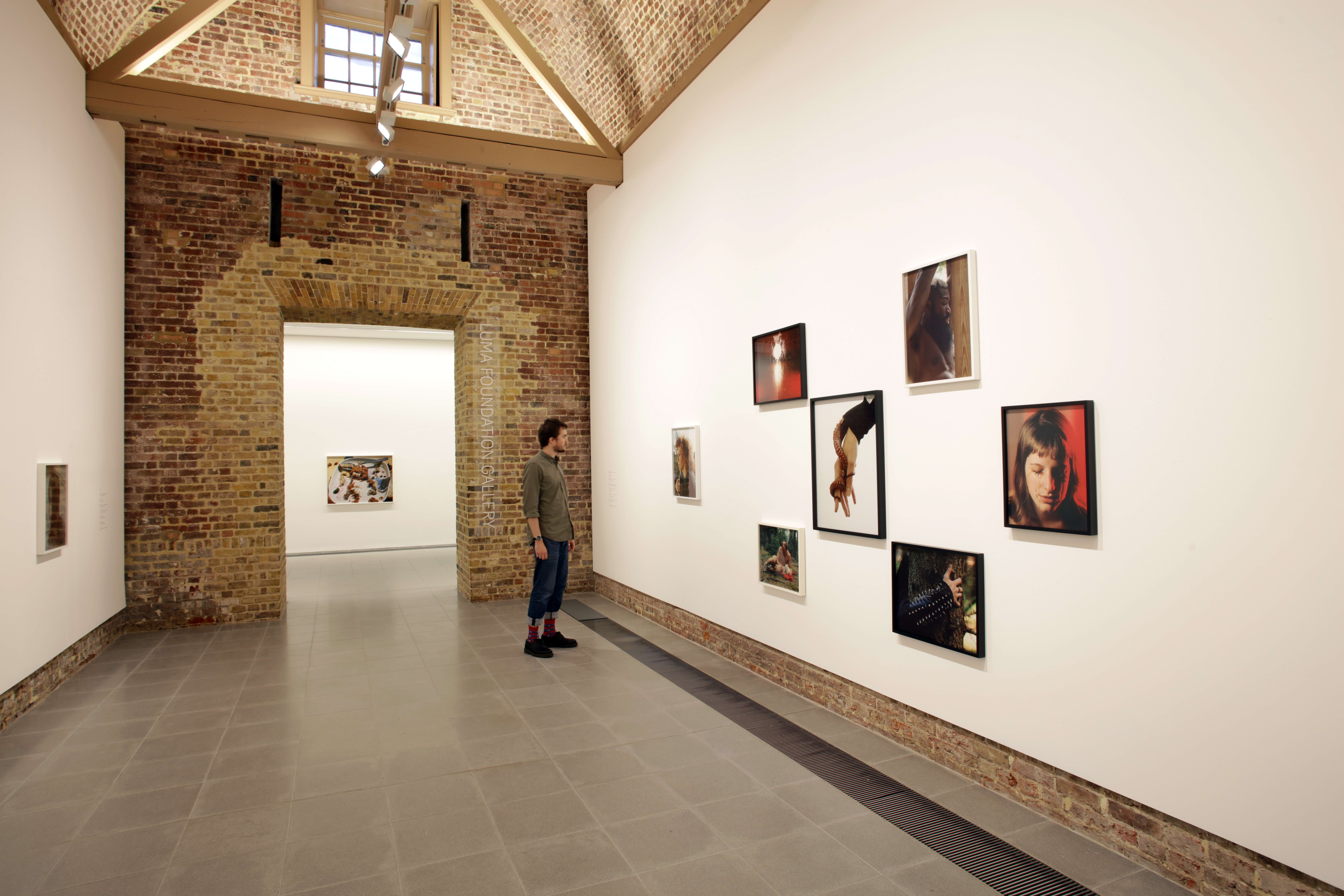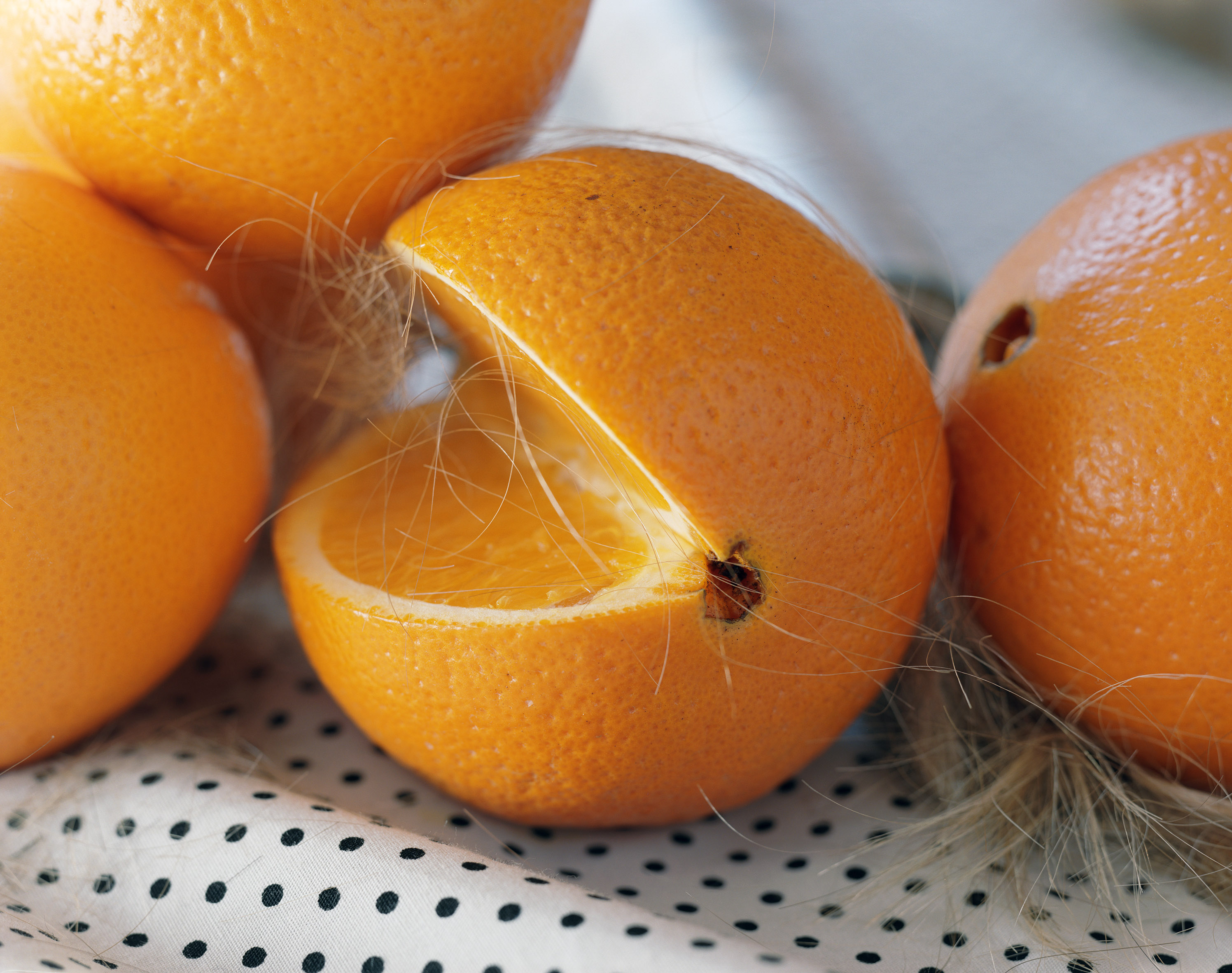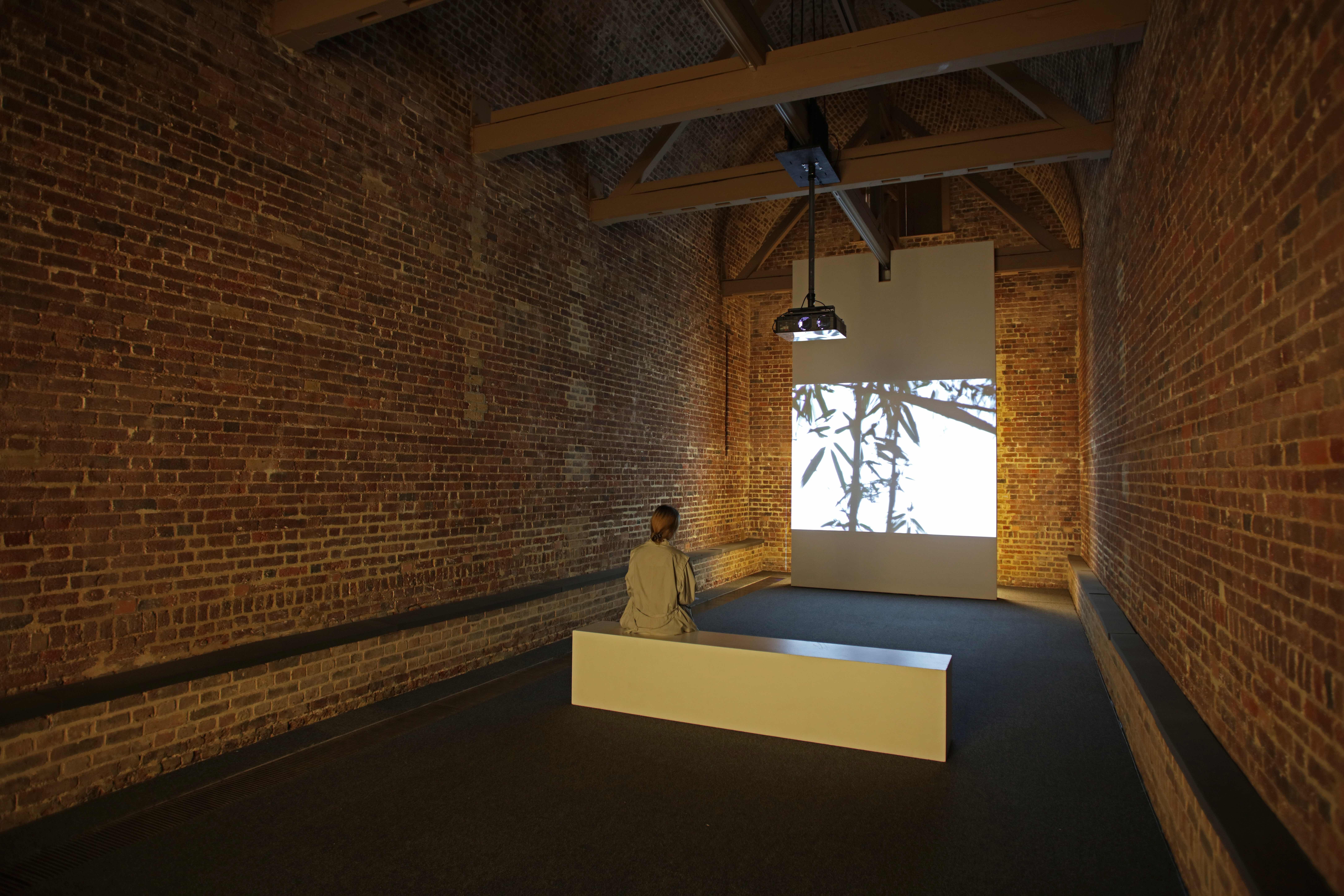The Touch That Made You
Torbjorn Rødland
Serpentine Gallery
Exhibition Review
Written Autumn 2017.

Image courtesy of Serpentine Gallery. © Torbjorn Rødland.
Any photographic exhibition lead by an image entitled First abduction attempt would in most cases be setting up audiences for a somewhat unsettling viewing experience. In the case of Torbjørn Rødland’s retrospective show The Touch That Made You, the images presented seem to exist as more than mere, shocking ploys in theatrical discomfort. Unsettling, would be too simplistic an understatement, not nearly doing justice to the genre-evading and complex nature of his works. Uncanny, would not be an inaccurate description, but still fails to nail the trifecta of the sexual, the mundane and the humorous that has become his signature style. You see, Rødland’s work evades constraints; it fetishises the tame and makes a grandiose theatre of the everyday. This is the world of the widely infectious, celebrated and tenacious Norwegian visual artist.
Rødland’s obsessive pursuit of tension within his images often comes across as a sadistic one, constructing and presenting images with the crafty intention of ensnaring audiences, playing upon their most basic, innate curiosities. The beauty of this is often in its simplicity, designing and orchestrating scenes that cannot be visually digested in a single look or that are so mesmerizing or shocking that they require several visits or glances. In Butterflies (2007), a pair of butterflies sit perched atop rotten bananas and slices of oranges, in an almost impossibly perfect, intimate composition that seems to good to be true. The Photographer (2015) displays a baby’s deformed hands that grasp a digital camera with a punctuated accuracy. Stockings, Jeans and Carpeted Stairs (2013), features a muscular male arm clasps a woman’s stockinged foot in a way that’s more implicit than neutral, whilst in Summer Scene (2014) a young man’s face is shown wedged between the surface of a floor and the sole of strangers Vans trainer. Nearly every image is designed to perplex, skewer expectation, and push comfort zones to the very brink of both acceptability and predictability, often playing with texture, interaction and intimacy.

Image courtesy of Serpentine Gallery. © Torbjorn Rødland.
The exhibition’s maiden image (referenced in paragraph one), remains a rather memorable one. Perched beneath an almost impossibly low pull-up bar, a young woman is shown, grimacing as her jeans sit low on her raised thighs, revealing her legs subtly enough for her crotch to somehow remain obscured. It requires a few looks at the image itself to work out whether the face of the subject is animated mid-orgasm, or mid-anguish. Then the questions begin. Why is the bar so low? Is there even an abductor? Has the title been chosen, in order for the (assumed, staged) image to be interpreted in a certain way? Yet, despite the dark content of the image and its erotic undertones, the scene is undoubtedly beautiful to the eye. Rich in a wide-range of tonal play with both shadow and natural light, the thought process in creating an image so visually dynamic appears both calculated and complex. Within this same breath, is his eponymous video installation, located within the heart of the exhibition itself. Layering carefully choreographed humour (in the form of dancing plants and trees to a four to the floor EDM beat) with sexuality and repetition, the video acts as respite from some of the more intense images experienced en-route to the viewing room.

Image courtesy of Serpentine Gallery. © Torbjorn Rødland.
Although it goes without saying that Rødland’s work should be celebrated, it would be naive to praise it without raising an eyebrow at of the more questionable elements of his work. Most famously, there is Baby (2007), an image that in one swift move parodies glamour modelling by way of a robotically, serene looking infant in a way that will make even the most liberal of viewers squint in disbelief. There is also The Morning After (2005), which seems to deliberately or naively flirt with aspects of race by way of blackface in a way that comes across as more art-school rebellion as opposed to constructive in any real way. Existing as one of several sexually tense images, is This is my body (2013-15), which as beautiful as its lighting is, seems like no more than a display of stock-masculine dominance, in what appears as the prelude or aftermath of a sexual act; a teeth-grindingly awkward and painfully clichéd composition, essentially looking like a fifty-shades freeze-frame. With the focus on the submission of the timid, nervous female character, empowerment (for her) by way of the ambiguous title seems too distant a straw to grasp at. For all that it’s worth, Rødland’s lack of limitation in his work, on one hand makes him in some ways unstoppable, but on the other, makes him vulnerable to much avoidable attack and critique.
Still, the man knows how to have fun and if there is anything that contemporary photography, between exhausted documentary subjects, droll landscapes and half baked portrait series’ often needs, is fun. Expect nothing less than forgetting what you understood about analogue, staged or contemporary photography and step firmly into the perverse mind-palace of an artist who values the power of form, and aesthetic as much as he does the power of shock, anticipation and perception.